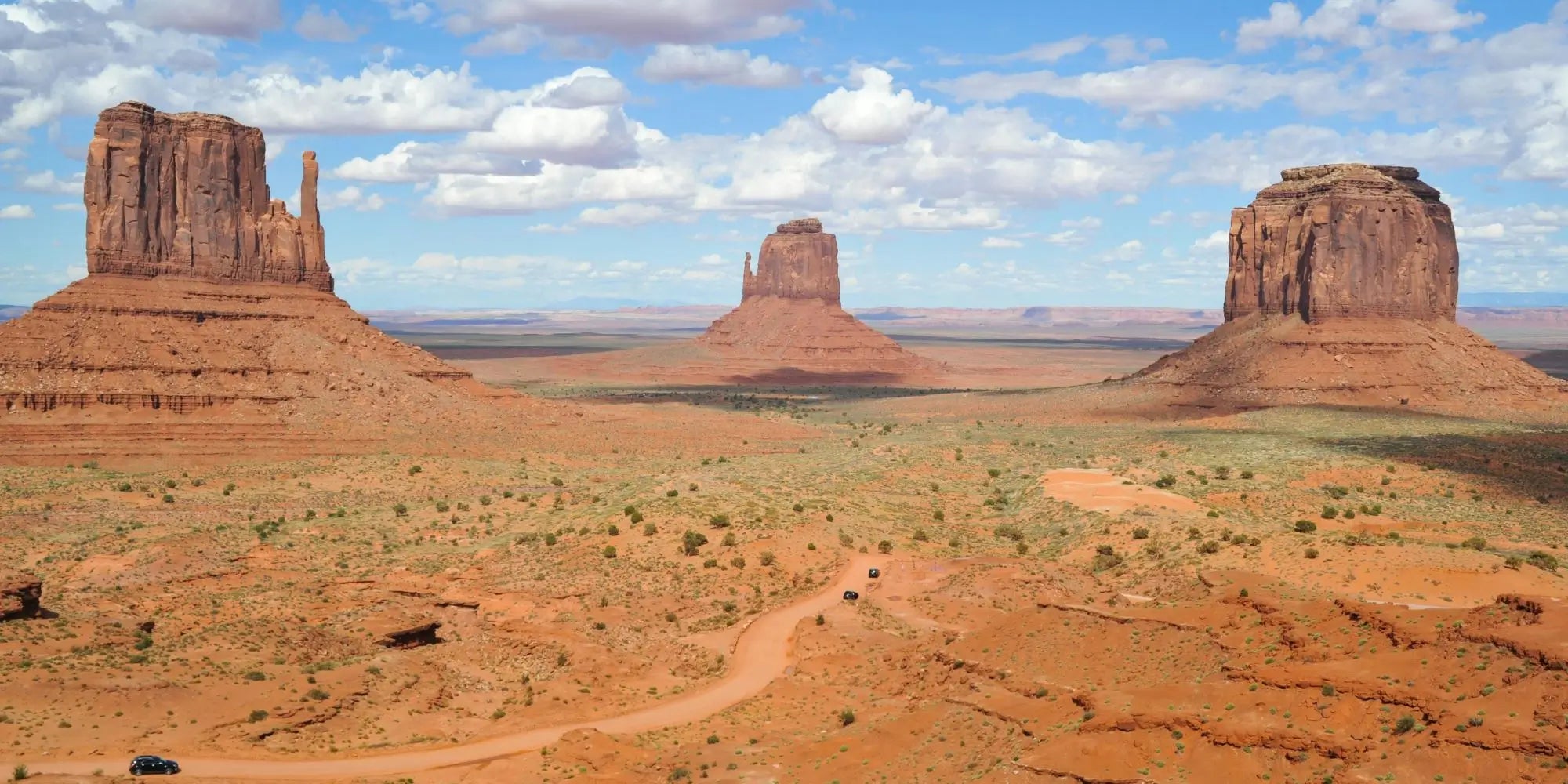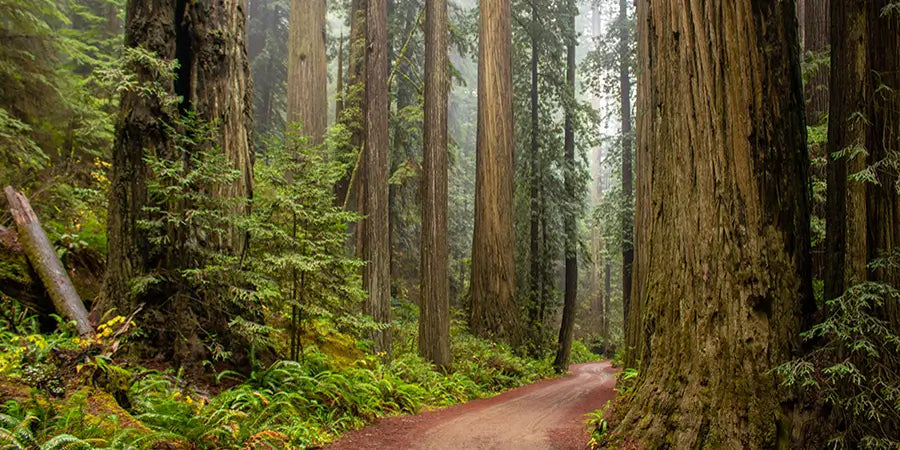Introduction:
The United States is home to an exceptional treasure trove of natural wonders, thanks to its extensive National Park System. Established to preserve the country's most precious landscapes, the National Park System encompasses diverse ecosystems, breathtaking vistas, and unique geological formations that draw millions of visitors each year. In this guide, we'll delve into the heart of America's wilderness, exploring 7 iconic national parks.
Since its inception in 1916, the National Park System has grown to encompass over 400 units, covering more than 84 million acres of land. From rugged mountains to vast deserts, lush forests to pristine coastlines, these parks showcase the incredible diversity of America's landscapes and ecosystems. Whether you're seeking adventure, solitude, or a deeper connection with nature, there's a national park waiting to be explored.
Yellowstone National Park

History and Significance:
Yellowstone National Park holds the distinction of being the world's first national park, established in 1872. Its creation marked a pivotal moment in conservation history, setting a precedent for the protection of natural landscapes for future generations. Situated primarily in Wyoming but also extending into Montana and Idaho, Yellowstone encompasses nearly 3,500 square miles of pristine wilderness, including vast forests, alpine meadows, and an impressive array of geothermal features.
The park's significance lies not only in its natural beauty but also in its role as a hotspot for geothermal activity. Yellowstone is home to more than half of the world's geysers, including the iconic Old Faithful, which erupts with remarkable regularity, delighting visitors with its towering plumes of steam and water. These geothermal wonders are a testament to the park's volcanic past, with bubbling mud pots, colorful hot springs, and steaming fumaroles adding to its otherworldly allure.
Key Attractions and Activities:
- Geothermal Features: Beyond Old Faithful, Yellowstone boasts a wealth of other geothermal attractions, such as the Grand Prismatic Spring, the largest hot spring in the United States, renowned for its vibrant colors and surreal beauty. Visitors can also explore the Norris Geyser Basin, the park's hottest and most dynamic thermal area, where boiling springs and erupting geysers paint a vivid picture of the Earth's inner workings.
- Wildlife Viewing: Yellowstone is a haven for wildlife enthusiasts, offering unparalleled opportunities to observe iconic species such as bison, elk, grizzly bears, and wolves in their natural habitats. Hayden Valley and Lamar Valley are prime locations for spotting wildlife, especially during the early morning and evening hours when animals are most active.
- Scenic Drives: The park features an extensive network of scenic drives, including the Grand Loop Road, which connects the park's major attractions and offers breathtaking views of its diverse landscapes. Be sure to stop at overlooks like Artist Point and Inspiration Point for panoramic vistas of Yellowstone's iconic features.
- Hiking and Backpacking: With over 900 miles of hiking trails, Yellowstone provides endless opportunities for exploration and adventure. Whether you're embarking on a short nature walk or a multi-day backpacking trip, you'll encounter stunning scenery, pristine wilderness, and the chance to connect with nature on a deeper level.
Yosemite National Park

Overview of the Park's Geography:
Yosemite National Park, located in the Sierra Nevada mountains of California, spans over 1,100 square miles of pristine wilderness. The park's diverse landscapes encompass towering granite cliffs, cascading waterfalls, lush valleys, and ancient giant sequoia groves. Yosemite Valley, carved by glaciers millions of years ago, is the park's most iconic feature, with sheer granite walls rising thousands of feet above the valley floor. Surrounding the valley are expansive wilderness areas, including the high country of Tuolumne Meadows and the rugged canyons of the Merced River.
Iconic Landmarks and Natural Wonders:
- Half Dome: Perhaps the most recognizable feature of Yosemite, Half Dome is a granite monolith that rises nearly 5,000 feet above the valley floor. Adventurous hikers can tackle the strenuous Half Dome Trail, which culminates in a thrilling ascent up the famous cable route to the summit, offering unparalleled views of Yosemite Valley below.
- Yosemite Falls: Plunging a total of 2,425 feet in three distinct sections, Yosemite Falls is one of the tallest waterfalls in North America. Visitors can enjoy stunning views of the falls from various viewpoints throughout the valley, with peak flow typically occurring in the spring as snowmelt swells the Merced River.
- El Capitan: Towering over 3,000 feet above the valley floor, El Capitan is the largest granite monolith in the world and a mecca for rock climbers from around the globe. Witnessing climbers scale the sheer vertical face of El Capitan is a sight to behold and a testament to the human spirit of adventure and perseverance.
- Mariposa Grove: Home to over 500 mature giant sequoia trees, including the famed Grizzly Giant and California Tunnel Tree, Mariposa Grove is a living testament to the awe-inspiring majesty of these ancient giants. Visitors can explore the grove via a network of trails, marveling at the sheer size and beauty of these towering sentinels.
Grand Canyon National Park

Geological Marvels and Formation History:
Grand Canyon National Park, located in northern Arizona, is a testament to the power of erosion and the geological forces that have shaped the landscape over millions of years. Carved by the mighty Colorado River, the Grand Canyon stretches for 277 miles and plunges to depths of over a mile, revealing layers of ancient rock that date back billions of years.
The formation of the Grand Canyon began nearly two billion years ago, as tectonic activity and the erosive forces of wind and water gradually sculpted the landscape. Today, the canyon's exposed rock layers provide a window into the Earth's geological history, with each layer representing a different era of geologic time.
Hiking Trails and Viewpoints:
- South Rim: The South Rim of the Grand Canyon offers some of the most iconic viewpoints and hiking trails in the park. Visitors can stroll along the Rim Trail, which offers panoramic views of the canyon and access to popular overlooks like Mather Point and Yavapai Point. For more adventurous hikers, the Bright Angel Trail and South Kaibab Trail provide opportunities to descend into the canyon and experience its depths firsthand.
- North Rim: The North Rim offers a more remote and rugged experience, with fewer crowds and a cooler, more forested environment. The North Kaibab Trail leads hikers to the canyon floor, passing through lush forests, cascading waterfalls, and stunning rock formations along the way. The North Rim also features scenic viewpoints like Point Imperial and Cape Royal, offering sweeping vistas of the canyon and surrounding landscape.
- Rim-to-Rim: For experienced hikers seeking a challenging adventure, the Rim-to-Rim hike offers an epic journey across the canyon, traversing from the South Rim to the North Rim (or vice versa). This multi-day trek covers approximately 21 miles and requires careful planning and preparation, but rewards hikers with unparalleled views and a profound sense of accomplishment.
- Hermit Trail: Providing a less crowded alternative to the more popular South Rim trails, the Hermit Trail offers a rugged and scenic route to the canyon floor. Hikers can descend through ancient rock layers and traverse dramatic landscapes, encountering historical sites and panoramic viewpoints along the way.
Great Smoky Mountains National Park

Biodiversity and Ecosystem Richness:
Great Smoky Mountains National Park, straddling the border between North Carolina and Tennessee, is renowned for its unparalleled biodiversity and rich ecosystems. Encompassing over 800 square miles of pristine wilderness, the park is home to an astonishing array of plant and animal species, making it one of the most biologically diverse areas in North America.
The park's diverse habitats range from lush temperate rainforests and old-growth hardwood forests to high-elevation spruce-fir forests and open meadows. This rich tapestry of ecosystems supports an estimated 19,000 species, including more than 1,500 flowering plant species and hundreds of vertebrate species, such as black bears, white-tailed deer, and the elusive synchronous fireflies.
Popular Trails and Wildlife Spotting Opportunities:
- Appalachian Trail: As it winds its way through the heart of the park, the Appalachian Trail offers hikers the chance to experience the beauty and solitude of the Smokies firsthand. Whether you're embarking on a day hike or a multi-day backpacking trip, the trail provides breathtaking views, tranquil streams, and the opportunity to encounter a variety of wildlife along the way.
- Clingmans Dome: At 6,643 feet, Clingmans Dome is the highest point in the Great Smoky Mountains and offers panoramic views of the surrounding mountains and valleys. A short but steep paved trail leads to an observation tower at the summit, where visitors can enjoy sweeping vistas of the Smokies and beyond.
- Cades Cove: This picturesque valley is one of the most popular destinations in the park, offering a scenic loop road with opportunities for wildlife viewing, historical exploration, and outdoor recreation. Keep an eye out for white-tailed deer, black bears, wild turkeys, and other wildlife that frequent the area.
Zion National Park

Unique Rock Formations and Landscapes:
Zion National Park, located in southwestern Utah, is renowned for its stunning red rock cliffs, narrow slot canyons, and verdant river valleys. Carved by the Virgin River over millions of years, the park's dramatic landscapes showcase the raw power of erosion and the beauty of nature's sculpting handiwork.
One of the park's most iconic features is Zion Canyon, a deep and narrow gorge that cuts through the heart of the park, revealing towering sandstone cliffs that glow with fiery hues at sunrise and sunset. Other notable rock formations include the Great White Throne, Angel's Landing, and the Court of the Patriarchs, each offering a unique and awe-inspiring vista of the canyon's splendor.
Hiking Trails and Outdoor Adventures:
- The Narrows: Perhaps the most famous hike in Zion, The Narrows is a unique and unforgettable experience that takes hikers through the towering walls of Zion Canyon, sometimes with the river as the trail itself. Wading through the Virgin River amidst soaring sandstone cliffs is a thrilling adventure that rewards hikers with stunning views and a sense of awe.
- Angel's Landing: For those seeking a challenge and a bird's-eye view of Zion Canyon, the hike to Angel's Landing is a must-do. This exhilarating trail climbs steep switchbacks and exposed cliffs to reach a narrow spine of rock with sheer drop-offs on either side. The panoramic views from the summit are nothing short of breathtaking.
- Emerald Pools: A series of interconnected trails lead to the Emerald Pools, a tranquil oasis nestled beneath towering cliffs. Hikers can explore three levels of pools, each with its own unique character and beauty, including waterfalls, lush vegetation, and colorful hanging gardens.
- Observation Point: Offering one of the most spectacular viewpoints in the park, the hike to Observation Point rewards hikers with sweeping vistas of Zion Canyon, including iconic landmarks like Angel's Landing and the Virgin River below. The trail ascends steeply through a series of switchbacks and offers a challenging but immensely rewarding experience for those seeking solitude and stunning scenery.
Rocky Mountain National Park

Alpine Scenery and Wildlife:
Rocky Mountain National Park, located in Colorado, is renowned for its breathtaking alpine landscapes, towering peaks, and abundant wildlife. Encompassing over 415 square miles of rugged terrain, the park is a haven for outdoor enthusiasts and nature lovers alike.
The park's high-elevation landscapes include alpine meadows, subalpine forests, and glacier-carved valleys, providing habitat for a diverse array of wildlife. Visitors may encounter iconic species such as elk, mule deer, bighorn sheep, and moose, as well as smaller mammals like marmots, pikas, and yellow-bellied marmots. Birdwatchers will delight in spotting golden eagles, peregrine falcons, and ptarmigans soaring above the peaks.
- Hiking: Rocky Mountain National Park offers over 350 miles of hiking trails, ranging from leisurely nature walks to challenging alpine ascents. Popular hikes include the Emerald Lake Trail, which winds through lush forests and past picturesque lakes, and the challenging hike to the summit of Longs Peak, the park's highest peak.
- Camping: The park features several campgrounds for both tent and RV camping, including Moraine Park Campground and Glacier Basin Campground. Backcountry camping is also available for those seeking a more immersive wilderness experience, with permits required for overnight stays in the backcountry.
- Wildlife Watching: Wildlife watching is a favorite activity for visitors to Rocky Mountain National Park, with opportunities to spot animals throughout the park's varied ecosystems. The best times for wildlife viewing are typically early morning and late afternoon, when animals are most active. Be sure to bring binoculars and a camera to capture sightings of elk, deer, and other wildlife in their natural habitat.
Acadia National Park

Coastal Beauty and Rugged Landscapes:
Acadia National Park, located on the rugged coast of Maine, is renowned for its stunning coastal beauty and diverse landscapes. Encompassing over 49,000 acres of pristine wilderness, the park features rocky shorelines, granite peaks, lush forests, and picturesque islands, providing visitors with a rich tapestry of natural wonders to explore.
The park's coastal beauty is highlighted by iconic landmarks such as Cadillac Mountain, the tallest peak on the East Coast, which offers panoramic views of the surrounding islands and Atlantic Ocean. Visitors can also explore the park's rocky coastline, dotted with tide pools, sea caves, and hidden coves, perfect for beachcombing, tidepooling, and wildlife watching.
Recreational Activities and Dining Options:
- Hiking and Biking: Acadia National Park offers a network of hiking and biking trails that traverse its diverse landscapes, from easy coastal walks to challenging mountain climbs. Popular hikes include the Precipice Trail, which ascends steep cliffs to breathtaking views, and the Carriage Roads, a network of historic gravel paths perfect for biking and horseback riding.
- Water Activities: The park's coastal location provides ample opportunities for water-based activities such as kayaking, canoeing, and sailing. Visitors can explore the park's rugged coastline by sea kayak, paddleboard, or boat tour, discovering hidden coves, secluded beaches, and scenic islands along the way.
- Dining: After a day of adventure in Acadia National Park, visitors can enjoy a variety of dining options in nearby Bar Harbor and surrounding communities. From fresh seafood and local lobster to gourmet cuisine and casual eateries, there's something for every palate and budget.
Conclusion:
Exploring America's national parks is an experience like no other, offering a glimpse into the country's rich natural heritage and diverse landscapes. From the towering peaks of Rocky Mountain National Park to the rugged coastlines of Acadia, each park offers its own unique blend of beauty, adventure, and cultural significance.
So, whether you're planning your next outdoor adventure or simply seeking a moment of solace in nature, I encourage you to consider visiting one of America's national parks. Whether you're a seasoned outdoor enthusiast or a first-time visitor, there's something for everyone to discover and appreciate in these natural treasures. So go ahead, pack your bags, and embark on a journey to explore America's greatest natural wonders. The adventure awaits!









